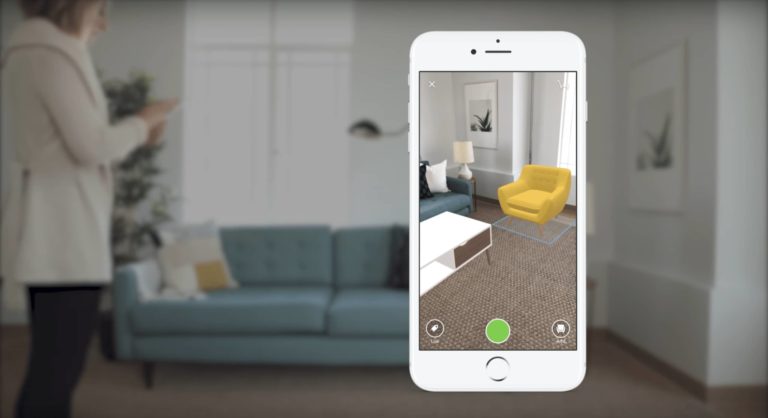
Immersive shopping is proving to have experiential impact for consumers, and revenue impact for brands. Related to – but separate from – AR advertising, this is when AR is used as a tool to visualize and contextualize products to engender more informed consumer purchases.
This is a subset of AR that we call camera commerce. It comes in a few flavors, including visualizing products on “spaces and faces.” It also includes visual search – pointing one’s smartphone camera at a given product to get informational, identifying, or transactional overlays.
In each case, AR brings additional context and confidence to product purchases. And this value has been elevated during a pandemic, as AR brings back some of the product dimension and tactile detail that’s been taken away from consumers during retail lockdowns.
Synthesizing these factors, ARtillery Intelligence recently produced a report to dive into the drivers and dynamics of camera commerce. How is the field shaping up? Who’s doing what? And how big is the market opportunity? We’ve excerpted the report below for AR Insider readers.
Proof Points
Picking up where we left off in the last report excerpt, one of AR’s bright spots is its ability to boost sales by demonstrating products with greater dimension. Product attributes can be exposed more effectively through 3D and AR interfaces than traditional 2D images in eCommerce.
Of course, all of the above is conceptual. The real proof is in figures and performance data. Does AR actually create more immersive product experiences, and does that translate to the bottom line? Here are a series of data points we’ve assembled to answer these questions.
— Shopify reports that products with 3D and AR visualization features achieved 94 percent greater conversions on average than non-AR benchmarks.
— Shopify separately reports that some products at the highest end of the performance spectrum can achieve 250 percent conversion boosts.
— Home Depot reports that its AR product visualization feature boosts conversions 2x-3x over eCommerce benchmarks.
— Seek reports that the company’s work with Overstock.com resulted in conversion increases from 10-200 percent.
— NexTech AR Solutions reports that its campaign for Miele Vacuum saw a conversion boost of 300 percent over non-AR equivalents.*
— Gunner Kennels has achieved a 40 percent lift in conversions using AR visualization.
— Herschel Supply Co reports that its AR furniture visualization feature led to a 152 percent increase in revenue per visit.
— 3D and AR design platform Vectary announced that it has seen a 300 percent increase in AR product views since the beginning of the pandemic.
Biggest Culprit
You may notice that the terms “3D and AR” are used above. For those unfamiliar, 3D product visualization involves models you can spin. AR has the additional distinction of activating your camera to place the model in your space. Google Swirl is a good example of both.
Another distinction is AR’s ability to boost conversions and reduce returns. The above campaign metrics only cover the former, as it’s a valuable outcome. Specifically, the appeal for brands and retailers is tangible signals to attribute AR investment to sales impact.
As for returns, this is likewise music to the ears of several brands and retailers. Because AR visualization gives consumers a better sense of product size, color, and dimension (especially in an eCommerce-accelerated pandemic), those products are less likely to be returned.
To put some numbers behind that, returns are a $428 billion per year pain point. And downward pricing pressure from Amazon has forced brands to offer free shipping and returns which further cuts into margins. This makes reducing returns an outcome that resonates with eTailers.
We’ll pick things up there in the next installment by examining hard numbers on AR’s ability to reduce returns in eCommerce…
*Disclosure: AR Insider Editor Mike Boland owns stock in NexTech AR Solutions. See our full disclosure and ethics policy here.

